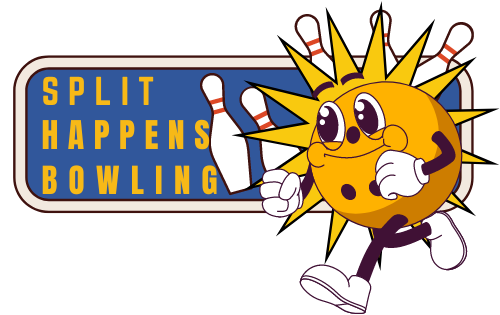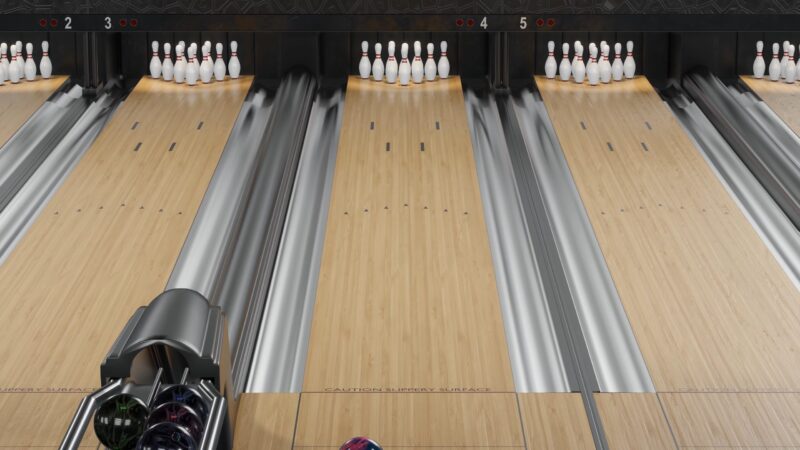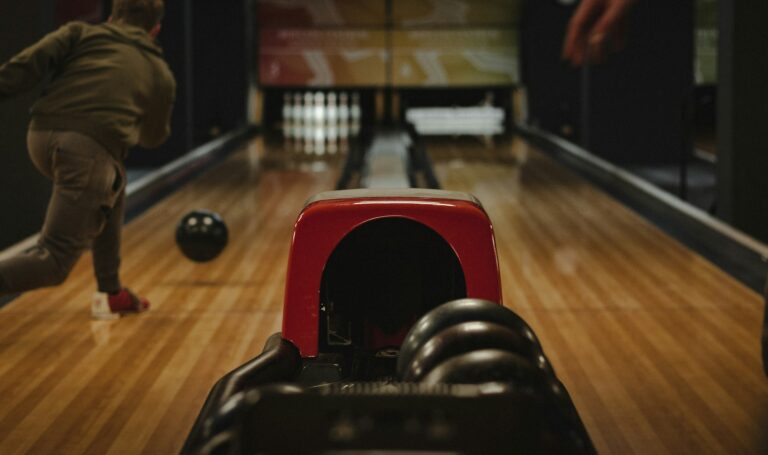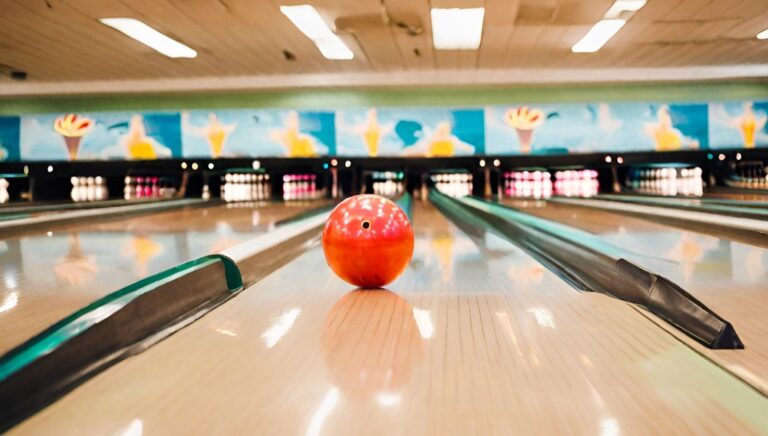Ever stood at the start of a bowling lane, ball in hand, and wondered just how far those pins really are? Or perhaps you’ve tried to gauge the distance, hoping it might improve your game. Bowling lanes, with their glossy surfaces and geometric markings, are more than just a pathway for your bowling ball.
Whether you’re a professional bowler, a casual player, or someone just curious about the sport, understanding the dimensions of a bowling lane can give you a deeper appreciation for the game. Today we’ll talk about its length, breaking it down into both feet and meters, and explain the significance of these dimensions.
Standard Dimensions
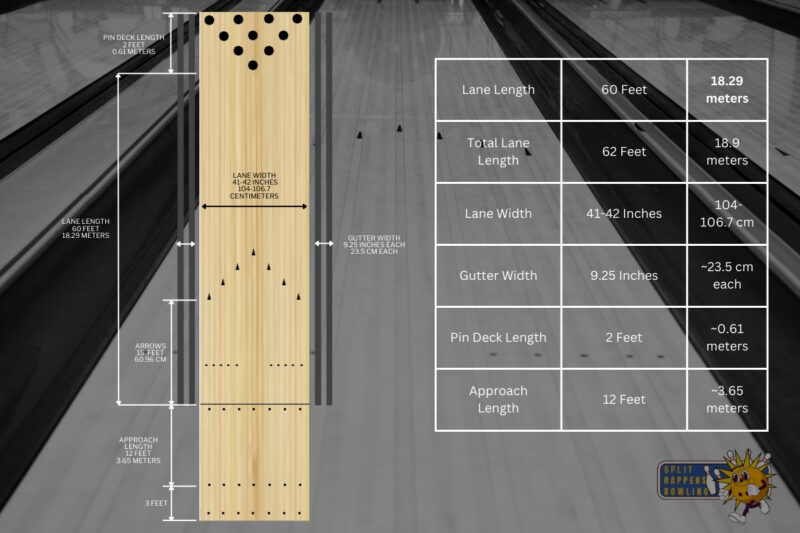
When you step into a modern bowling alley, you’re stepping onto a lane that adheres to specific dimensions. These dimensions are crucial for maintaining the integrity of the game.
Length in Feet
A standard bowling lane is precisely 60 feet from the foul line to the headpin. This distance is critical as it provides bowlers with enough space to gauge their throw and make necessary adjustments.
The approach area, where bowlers start their run-up, adds another 15 feet, making the total length from the back of the approach to the pins 75 feet.
Length in Meters
For those who prefer the metric system, the bowling lane’s length from the foul line to the headpin is 18.29 meters. Including the approach area, the total length is approximately 22.86 meters.
This standardized length ensures that bowlers worldwide compete on an even playing field, regardless of where they are.
The Significance of Lane Dimensions
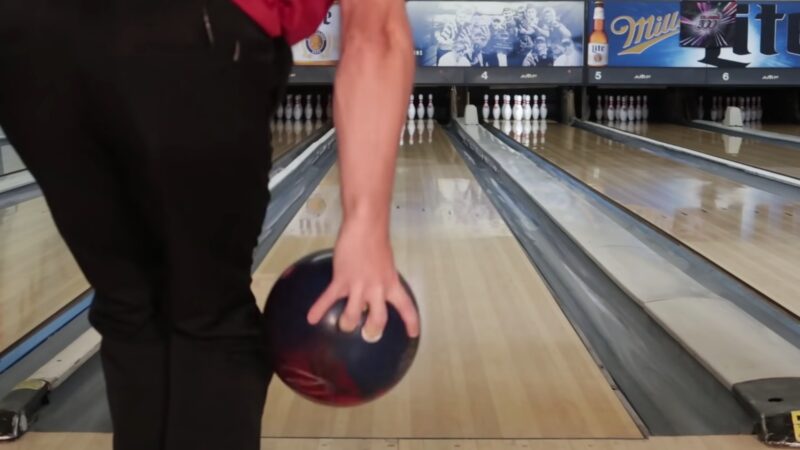
While it might seem arbitrary to some, the specific dimensions of a bowling lane have been chosen for very particular reasons. They impact the game’s dynamics and the strategies players employ.
Impact on Bowling Techniques
The 60-foot length of the lane influences how bowlers approach their throw. It’s long enough to challenge players, requiring precision and skill, but not so long that it becomes discouraging. The length allows for the ball to hook (curve) as it approaches the pins, which is a crucial technique in professional bowling.
The lane’s length, combined with its 41.5-inch width, dictates the ball’s trajectory and the angle at which it hits the pins.
Their Role in Scoring and Competitions
In professional bowling competitions, the lane’s dimensions play a pivotal role in scoring. Since every lane adheres to the same length and width, players can’t attribute their performance to variations in lane size.
This standardization ensures that scores are consistent across different alleys and tournaments, making competitions fair and results reliable.
Materials and Construction of Bowling Lanes
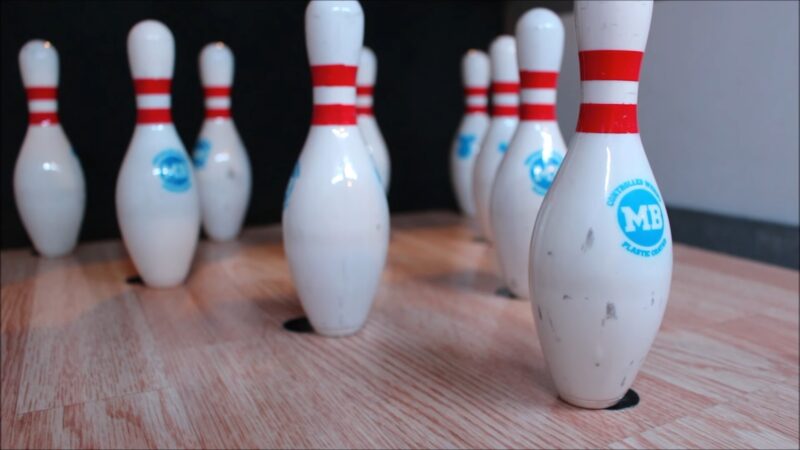
The materials used in constructing these areas not only determine its durability but also influence the ball’s movement. The choice of materials has evolved over time, reflecting advancements in technology and changing preferences of players.
Traditional Wood Lanes
Historically, bowling lanes were made of hard maple and pine woods. The first 12 to 16 feet, known as the “head” of the lane, was typically constructed from hard maple due to its durability. The remaining length was often made of pine.
These wooden lanes provided a unique texture and feel, but they required regular maintenance, including resurfacing to ensure a smooth playing surface.
Modern Synthetic Lanes
Today, many bowling alleys have transitioned to synthetic lanes. These lanes are made of layered composite materials designed to mimic the characteristics of wood. They offer several advantages: they’re more durable, require less maintenance, and provide a consistent playing surface.
Additionally, synthetic lanes can be customized with various designs and patterns, adding an aesthetic appeal to the bowling center.
Maintenance and Care
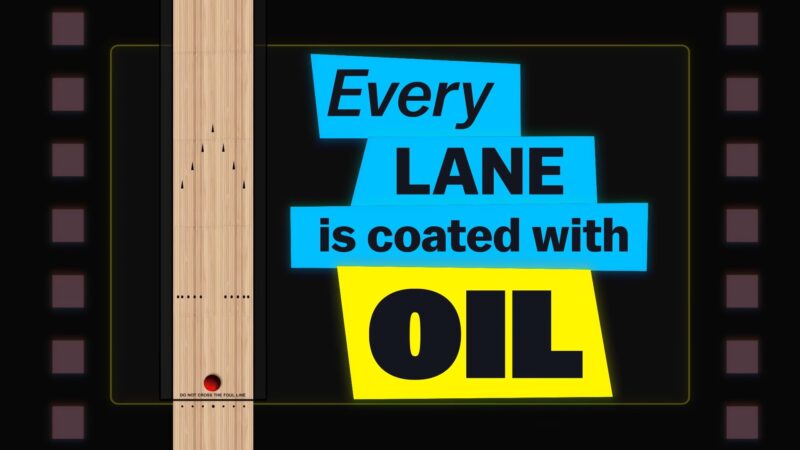
A bowling lane’s performance can be significantly impacted by its maintenance. Regular care ensures that the lane remains smooth, clean, and consistent, providing an optimal experience for bowlers.
Oiling Patterns
One of the most critical aspects of maintenance is the application of oil. Oiling patterns determine how the ball interacts with the lane’s surface. Different patterns can make the lane play “faster” or “slower,” and can influence the amount of hook a ball can achieve.
Bowling alleys often change these patterns, adding an extra layer of strategy to the game, as bowlers must adjust their techniques based on the oiling pattern in use.
Regular Cleaning and Resurfacing
Beyond oiling, these areas require regular cleaning to remove dirt, grease, and any other residues. For wooden lanes, resurfacing might be necessary every few years to address any wear and tear. This involves sanding down the lane and reapplying a protective finish.
Synthetic lanes, while more durable, still benefit from periodic deep cleaning and inspection to ensure they remain in top condition.
Variations in Bowling
While the standard ten-pin lane has specific dimensions, there are other variations of bowling that come with their own unique sizes and rules.
Candlepin Bowling
Popular in parts of New England and Canada, candlepin bowling features thinner pins and smaller balls. The lanes are similar in length to standard bowling lanes, but the playing dynamics are entirely different due to the unique pin shape and the allowance of three balls per frame instead of two.
Duckpin Bowling
Duckpin bowling, found primarily in the northeastern U.S., uses shorter, squatter pins and a smaller ball than ten-pin bowling. The dimensions are similar, but the game’s strategies and techniques differ, especially given the smaller size of the pins and ball.
The Role of Markings
Every lane is adorned with specific markings that assist bowlers in aiming and aligning their shots. These markings are not just for decoration; they serve functional purposes.
Arrows and Dots
About 12 to 16 feet from the foul line, you’ll notice a series of arrows that form an inverted triangle. These arrows help bowlers aim and align their shots.
Closer to the bowler, usually on the approach, are a series of dots. These dots assist bowlers in positioning themselves and establishing a consistent starting point for their approach.
Pin Deck Markings
At the end of the lane, where the pins are set, there are specific markings to ensure accurate pin placement. These markings are crucial for ensuring that the pins are consistently set in the correct positions, providing a standardized challenge for every bowler.
The Impact of Lane Conditions on Game Strategy
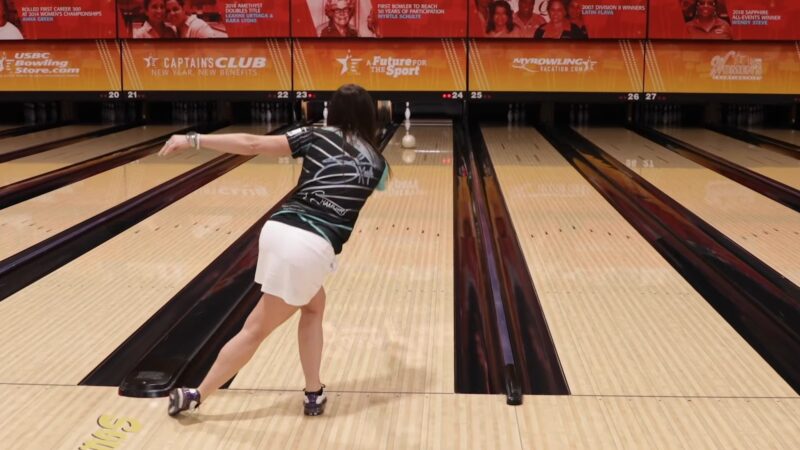
Beyond the physical dimensions and markings, the condition of a bowling lane can significantly influence a player’s strategy and performance.
Dry vs. Oily Lanes
As mentioned earlier, lanes are conditioned with oil patterns. A lane can be “dry” (less oil) or “oily” (more oil). The dry ones tend to offer more friction, causing the ball to hook more, while oily lanes reduce friction, leading to a straighter ball path.
Bowlers must adjust their throw, ball choice, and even their standing position based on these conditions.
Lane Breakdown Over Time
As a bowling session progresses, the oil on the lane gets spread and depleted, a phenomenon known as “lane breakdown.” This change can affect the ball’s movement, requiring bowlers to continually adapt their strategies as the game progresses.
Dimensions Around the World
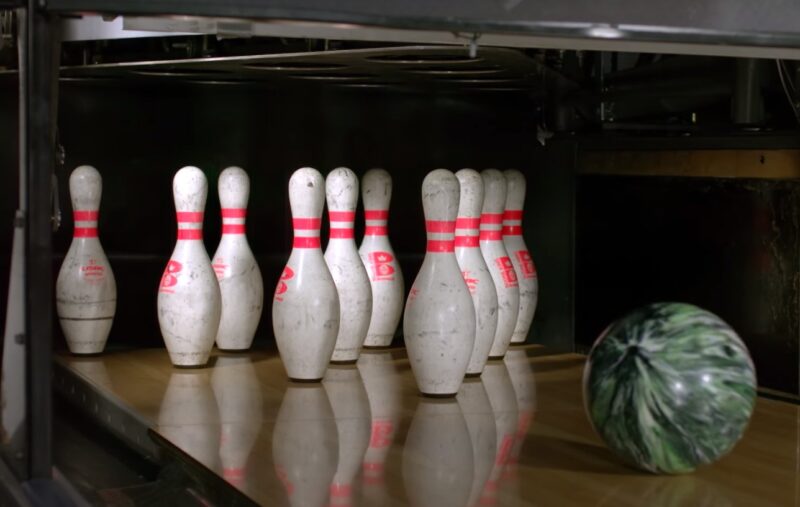
While the standard dimensions for ten-pin bowling lanes are consistent worldwide, it’s worth noting that bowling’s popularity has led to regional variations and adaptations.
Five-Pin Bowling
Exclusive to Canada, five-pin bowling features five pins arranged in a V-shape. The lane dimensions are similar to ten-pin bowling, but the game uses a smaller ball and has different scoring rules.
Nine-Pin Bowling
Popular in parts of Europe, nine-pin bowling, as the name suggests, uses nine pins arranged in a diamond shape. The lanes might be similar in length but can be slightly wider than the standard ten-pin lanes.
The History of Bowling Lane Dimensions
Bowling has a rich history that dates back thousands of years. The dimensions of the lane have evolved over time, but they have always played a crucial role in the game.
Ancient Origins
Bowling’s origins can be traced back to ancient civilizations like Egypt, where artifacts resembling bowling pins and balls have been discovered. These ancient games, however, were played on natural terrains, and the concept of a standardized lane was yet to be introduced.
The dimensions varied based on the region and the materials available.
Evolution in Modern Times
As bowling made its way to Europe and later to America, the need for standardization became evident. By the late 19th century, as bowling alleys began to emerge, the dimensions of the lane started to become more consistent.
The length was established to provide a balance between challenge and accessibility, ensuring that the game remained engaging for players of all skill levels.
FAQs:
Do bumper lanes have the same dimensions as standard lanes?
Bumper lanes, used primarily for beginners and children, have similar dimensions but with added bumpers along the gutters to prevent gutter balls.
Can their length impact the speed of the bowling ball?
Yes, longer lanes can result in faster ball speed due to the increased distance the ball travels.
Are there minimum and maximum lengths?
Yes, both the USBC and WTBA specify acceptable ranges for lane length to maintain competitive standards.
What is the purpose of the approach area?
The approach area provides bowlers with a smooth surface for their approach and delivery, helping to maintain consistent performance.
Are shorter or longer lanes more challenging for bowlers?
Longer lanes can be more challenging due to changes in ball dynamics and required adjustments, but shorter lanes also have their own complexities.
Conclusion
Bowling, a sport cherished by many, is a blend of skill, strategy, and understanding of the playing environment. The lane, often overlooked by casual players, is a marvel of design and engineering. Its dimensions, materials, markings, and conditions all converge to create a challenging yet rewarding experience.
Whether you’re aiming for a perfect 300, or just looking to have a fun night out with friends, a deeper appreciation of the bowling lane can only enhance your experience.
